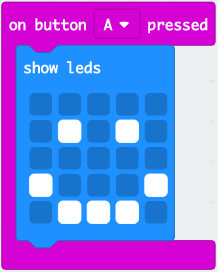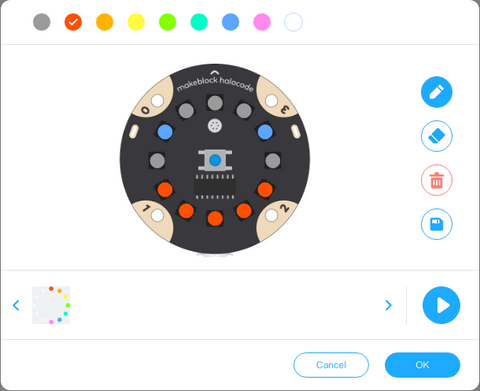As children and young adults are now being introduced to more and more technology from an increasingly early age, STEM education is becoming more important across schools and colleges worldwide, especially when it comes to coding and electronics. One amazing piece of STEM technology currently being used worldwide is the BBC micro:bit, however, there is now a new contender on the market called the Halocode, from the same company behind the popular mBot series of STEM products. So the question is, which one is right for you?
The BBC micro:bit is a handheld, programmable micro-computer that can be used for all sorts of cool creations, from robots to musical instruments. It’s widely used in schools around the world, from the UK to Finland and Iceland to Sri Lanka. Programmable from within any web browser means no extra software is required, and there are dozens of fantastic accessories, activities and lesson plans geared towards primary and secondary school teachers.
The Halocode is the new contender to the world of micro-computers. Produced by Makeblock who have been designing STEM educational technologies since 2013 and are well known for their Codey Rocky and mBot products. Programmable via any browser or with their free downloadable mBlock software, the many integrated sensors mean it is well suited for IoT development with many more sensors and accessories coming soon.
Board Specifications
|
BBC micro:bit |
Halocode |
||
|
Dimensions |
43 x 52 x 11mm |
45mm in diameter |
|
|
Weight |
5g |
10g |
|
|
Chip |
Nordic nRF51822 |
ESP32 |
|
|
Processor |
Core |
ARM Cortex-M0 32-bit microprocessor |
Xtensa dual-core 32-bit LX6 microprocessor |
|
Clock Speed |
16MHz |
240MHz |
|
|
Onboard Memory |
Flash ROM |
256KB |
440KB |
|
RAM |
16KB |
520KB |
|
|
Expanded Memory |
SPI Flash |
N/A |
4MB |
|
PSRAM |
N/A |
4MB |
|
|
Bluetooth Support |
Yes |
Yes |
|
|
WiFi Support |
No |
Yes |
|
|
Operating Voltage |
3.3V |
3.3V |
|
|
LEDs |
25 Red LEDs in a 5x5 Matrix |
12 Addressable RGB LEDs |
|
|
Pins |
6 Read/Write 14 Write Only |
4 |
|
Coding Software
While both the micro:bit and Halocode support block and text-based programming languages, the software which they each use is vastly different.
The micro:bit can be coded via online MakeCode software which has been designed, developed and continually supported by Microsoft. It is free to use and can be accessed from any device that has a browser and internet connection. Using its own form of block programming this integrated development environment (IDE) also supports JavaScript. As you create a program using the block-code, it writes the Javascript version which you can access and vice-versa. This feature is great for error checking and debugging when getting students moving onto a textual language.
The Halocode can be coded via the mBlock 5 software developed by Makeblock. The IDE supports block programming used their modified variant of Scratch and the text-based language Python. The mBlock 5 software, similarly to the MakeCode software can be run online through any internet browser and is updated regularly. mBlock 5 also has a downloadable offline IDE which is available for PC, MacOS, Android and iOS which is great for saving bandwidth and using it in areas where the internet is not available, however, the updates for this software are not as regular as its online counterpart.
Coding Examples
We have created the same program for each of the devices which will use the LEDs to display a smiley face to the user when they press a button. As you can see they both make use of the block code in a similar way with the micro:bit using an input event to wrap around the entire code inside it allowing the users to see clearly where the event ends. The show LEDs block easily allows the user to select which LEDs they wish to light by clicking on the grid.
Comparing to the Halocode which is handled in a similar way following the same structure. The event is at the top of the block and everything underneath it is run when the event happens. This shows a small block which when clicked displays a screen for the user to pick which LEDs they want lit, along with the colour.
| BBC micro:bit | Halocode |
|
|
|
If you want more control each software allows you to manually code which LEDs turn on. As seen below the MakeCode software allows you to manually plot which LEDs on the micro:bit LEDs come on. As the micro:bit uses a matrix you need to plot the X and Y coordinates starting with 0,0 in the top left.
Comparing this to the HaloCode, it requires the same amount of lines of code but you only need to input the number of the LED you wish to light and while it defaults to red you can manually input the colour you wish it to be. While the Halocodes might seem easier at first, students can quickly plot the micro:bits LEDs once they grasp the concept of matrices and coordinates.
| BBC micro:bit | Halocode |
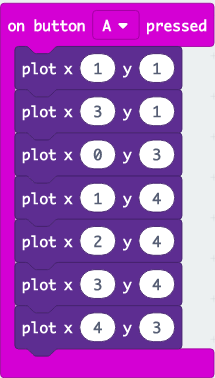 |
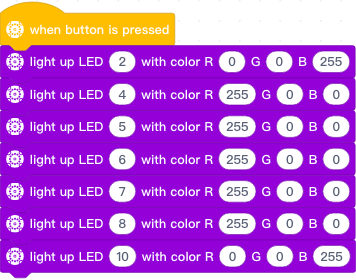 |
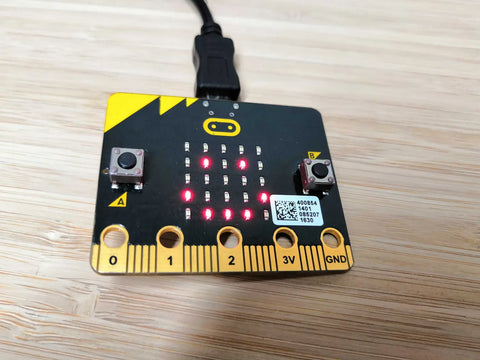 |
 |
Accessories
The micro:bit supports hundreds of different accessories, sensors, lights, robotics and components from a huge range of 3rd party makers and developers. The majority of these are all well supported and documented, along with custom made extensions for the MakeCode software.
The Halocode currently has no additional accessories, however, a range of 66 different expansions, sensors, LEDs and accessories have been developed by Makeblock are available soon which will be well supported within their software
Conclusion
We believe that both boards are great STEM technologies that are each perfect for introducing and building upon coding skills and moving between block-based and textual languages. However, They are not without their individual merits, While the micro:bit is very well supported with hundreds of different 3rd party modules, accessories, expansions and documentation along with some big brand names supporting it including: The BBC, Microsoft and Lloyds Bank. Whereas, the HaloCode is a very good contender with many official modules planned by the developers and is with the onboard WiFi and microphone makes it incredibly easy to produce IoT and Speech Recognition Smart Home projects.
If you are looking for an impressive all-round STEM technology we would recommend the BBC micro:bit, however, if you were looking for more a more specialised and powerful IoT and Speech Recognition STEM tool we would recommend the HaloCode.
If you have any questions about either the BBC micro:bit or HaloCode or any of our other products, please call us on 02033 930 813, or email sales@coolcomponents.co.uk and we'll get back to you as soon as possible.


